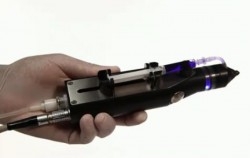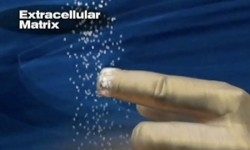
Putting the “Science” in “Science Fiction” – Wolverine
Wolverine is one of Marvel’s most iconic superheroes, and is one of the few widely known superhero characters who hails from Canada.
Although Wolverine is famous for his claws and adamantium skeleton, his most impressive power is his ability to rapidly heal from almost any injury. Wolverine’s “healing factor” goes far beyond the scope of natural human healing, and surpasses the regenerative abilities of real animals as well. Wolverine’s healing abilities allow him to recover from almost any injury with extreme speed, as well as protecting him from the effects of disease and old age, and giving him nearly unlimited endurance. It was this healing factor that has allowed him to live as long as he has, and to survive the process that bonded almost unbreakable adamantium to his skeleton to improve its toughness.
In comparison, the ability of human beings to recover from major injury without assistance is rare. In order to increase the effectiveness of medical treatments, and reach the ultimate goal of allowing the human body to heal itself, modern scientists have taken inspiration from Wolverine and other fictional regenerators as well as regenerating animals like starfish and geckos. This research has led to advancements in a number of fields, and there are many new and exciting techniques and technologies that are being dedicated to helping the noble goal of healing people.

One of the major limits on the human body’s ability to heal is its inability to regenerate damaged organs. With the exception of the liver, which can regenerate if as little as one quarter of its mass remains, humans organs cannot heal serious damage enough to return to completely normal functioning. Doctors have been able to address this problem in the past by using organ transplants but there are many problems with this solution, mainly issues with rejection and the difficulty of finding donors with compatible organs. Many people die while waiting for a compatible organ to become available, and this is even more of a pronounced problem with vital organs such as hearts.
In order to provide for these patients, scientists such as Dr. Anthony Atala are experimenting with ways of growing replacement organs in a lab and then transplanting them into the patient. These organs are created from the patient’s own cells, and so have no chance of being rejected by the person’s immune system. These custom grown organs would also save transplantees from the serious side effects of anti-rejection medication and allow them to better return to their normal lives. The creation of these organs would also mean that transplants would always be available when they were needed, and they were free of any damage or defects that might render them unusable.
In order to create these replacement organs scientists create a biodegradable framework in the shape of the organ. Samples from the donor’s damaged organ are then taken and multiplied in a laboratory, then applied to the framework while being provided with nutrients in a carefully controlled environment. The cells grow and multiply, then spread over the frame to create a duplicate of the original organ. The framework disintegrates, leaving the organ intact and ready for transplant. So far Atala and other researchers in this field have created skin, blood vessels, bladders, and stomachs, and are working creating more complex solid organs like hearts and lungs. Livers have been created, but have not yet been approved in human trials.
Although this technology has great promise, it requires a great deal more research before it becomes available to the general populace. More funding and research will also be required in order to allow the creation of more complex and vital, organs and make the creation of organs faster and easier.

Others researchers are focusing on using similar ideas to treat external injuries. One technology developed to accomplish this type of healing is the “skin cell gun,” a device that has been successfully used to treat burns of up to second degree severity. In order to use the device a sample of the patient’s healthy skin is taken and the stem cells are isolated from it. Stem cells are cells which have not become differentiated and possess the ability to specialize to form any other kind of cell, and modern techniques allow them to be gathered from adults. After extraction and separation the stem cells are loaded into the gun, which sprays a mixture of stem cells and water onto the injured area. The affected area is then attached to a system of tubes to provide nutrients and stimulate blood flow, and then allowed to heal. The stem cells grow healthy skin over the damaged tissue within roughly two weeks, compared to the months that skin grafts can take to heal, and does not require the removal of a large section of skin to provide the graft.
The smooth healing provided by the stem cells decreases the chances of infection, a very real danger when it comes to burns, and heals to match the patient’s normal skin colour and texture within a few months with little or no scarring. It may be some time before this tool comes into common use.
Currently, more advanced methods capable of healing internal and external injuries are being imagined, including U.S. Military designs for a battlefield model for stabilizing wounded soldiers and a larger machine that works like an inkjet printer to “print” layers of cells over a wound to heal even the largest internal and external injuries. Although this technology is still in its infancy it has a great deal of promise to allow quick and safe healing without the scars or infection risks of current methods.
These new healing techniques are amazing and offer vast improvements over current technology, but are a far cry from Wolverine’s ability to heal from almost any injury without assistance. Scientists are working towards this eventual goal but are limited by genetics.

Some researchers point to the use of extra cellular membranes, the tissue that provides structural support to cells, to allow human regeneration. Applying a prepared sample of this membrane, currently taken from pig bladders that have been cleaned to prevent rejection, into a wounded area has allowed the body to heal to an amazing degree with no scarring.
This procedure works as the matrix draws stem cells to the area while preventing the body from activating the scarring response it uses to seal large wounds. The stem cells then differentiate into the necessary cells to repair the damage. In animal tests this has allowed the regeneration of damaged parts of the heart, intestines, and various tendons, as well as other wounds. People have used this procedure to regenerate damage to the trachea, crippled leg muscles, and the tip of a finger. Although this technique seems low-tech it has a great deal of promise and its use on humans will increase as its effectiveness at helping the body to heal itself is proven. If these trials prove successful there are already plans for a cast-like device to create an environment that promotes stem cell growth, much like the womb, over an area which may theoretically allow regeneration or entire limbs.









